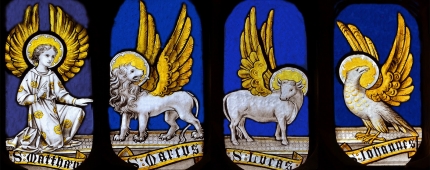2 Peter 1:1—Did the Apostle Peter really write this book?
Problem: The style of writing in 1 Peter is different than 2 Peter. Also the tone used in the first epistle is different than that of the second epistle. How can evangelicals claim that Peter wrote this epistle?
Solution: First, in his earlier epistle, Peter had Silas as a secretary (5:12, niv), but in the second epistle Peter seems to have written it himself. This could account for the lack of smoothness and style between the two epistles.
Second, different styles and tones should be expected in two different letters written for two different purposes which were written at different times. First Peter is written to encourage believers who are suffering, while 2 Peter contains warnings against false teachers. So, some of the difference in style and tone can be accounted for in the light of the different circumstances. After all, one would not write to his girlfriend the same way he would write to his congressman.
Third, there is good internal evidence that the letter is from Peter. Verse 1 claims it is from the Apostle Peter. Peter remembers the words of Jesus concerning His death, as recorded in John 21:18–19 (cf. 2 Peter 1:14). The author of this letter was an eyewitness to the Mount of Transfiguration, which is recorded in Matthew 17:1–8 (cf. 1:16–18). Peter even calls this his “second letter” (3:1, niv) which presupposes a first. And he is aware of the writings of the Apostle Paul and calls him “our beloved brother Paul” (3:15–16).
Fourth, there are not only some differences between epistles, but also some likenesses. Both place emphasis on Christ, 1 Peter on His suffering and 2 Peter on His glory. And in both epistles Peter refers to Noah and the flood (1 Peter 3:20; 2 Peter 2:5; 3:5–6).
Fifth, there is good external evidence that it was written in the 1st century by someone like Peter who was a contemporary of the events. The noted archaeologist William F. Albright dated 2 Peter before a.d. 80. The discovery of the Bodmer papyri (P72, ca. a.d. 250) reveals that it was highly respected in Egypt at an early date. The book was cited as authentic by numerous early church fathers, including Origen, Eusebius, Jerome, and Augustine.
Finally, if it was not written by Peter, then it is a biblical forgery, because the letter is said to be written by him. If it has not been written by Peter, then it is deceiving us and cannot be trusted in what it purports to tell us (i.e., his testimony to be a witness of the Transfiguration). Consideration of all the above factors provides strong evidence that the Apostle Peter is the writer of this epistle and not someone else. So we have no reason to distrust its content.
See All Problems
This excerpt is from When Critics Ask: A Popular Handbook on Bible Difficulties (Wheaton, Ill.: Victor Books, 1992). © 2014 Norman Geisler and Thomas Howe. All rights reserved. Used by permission. Click here to purchase this book.














